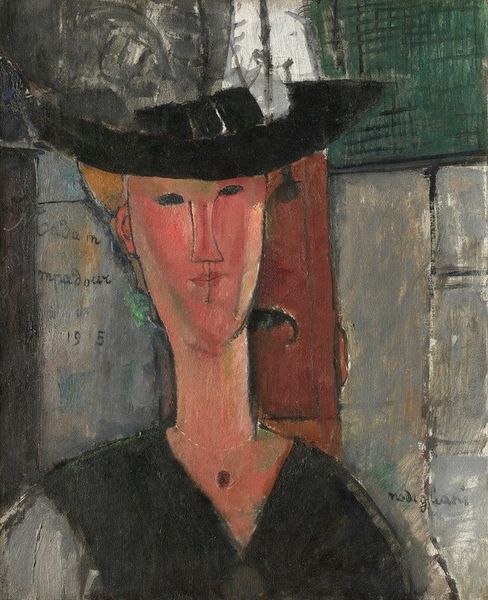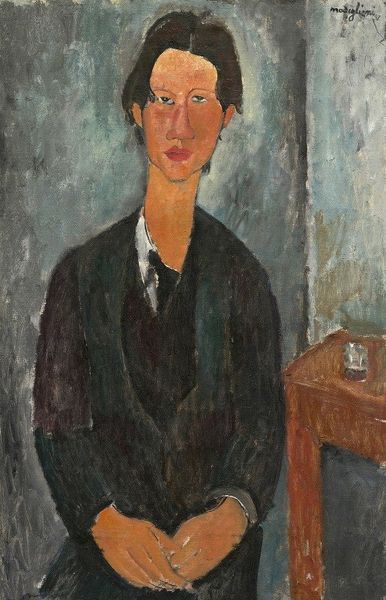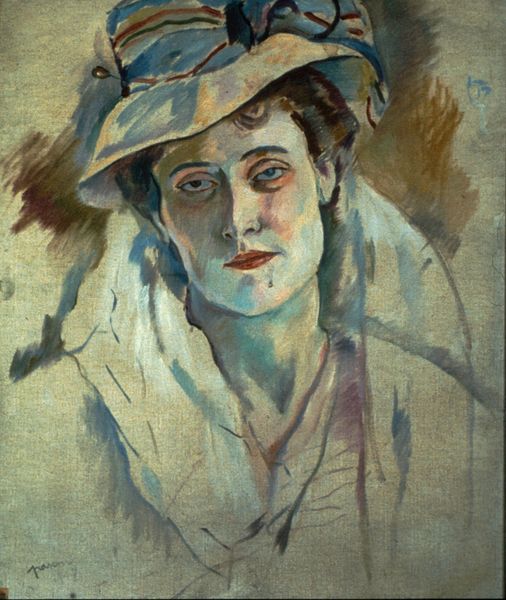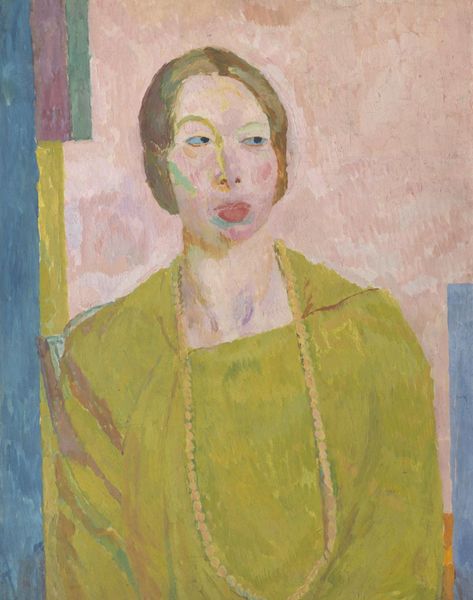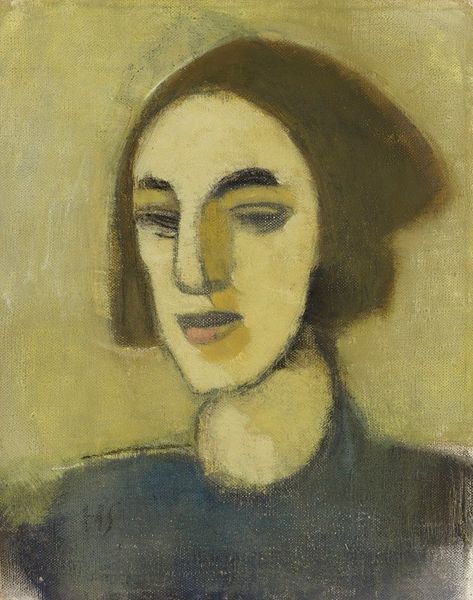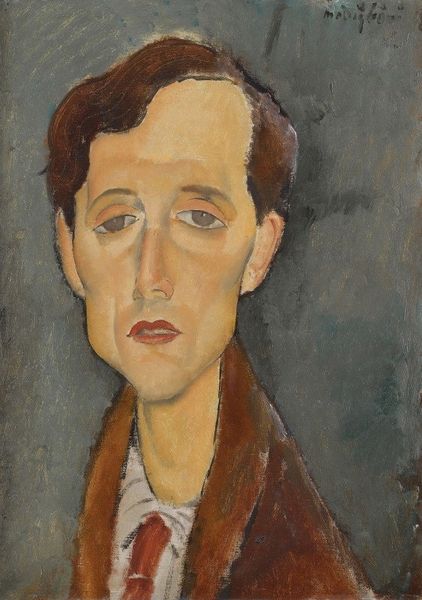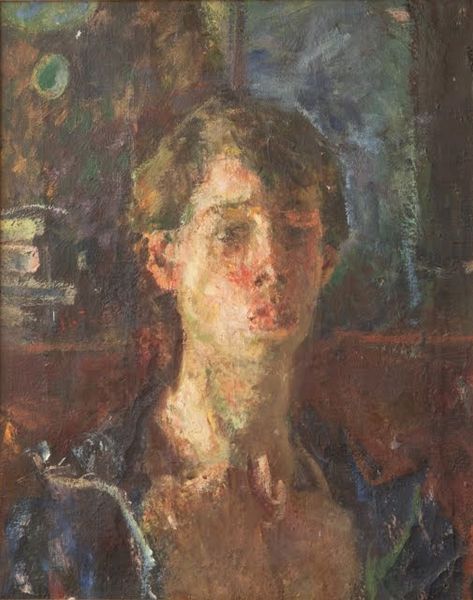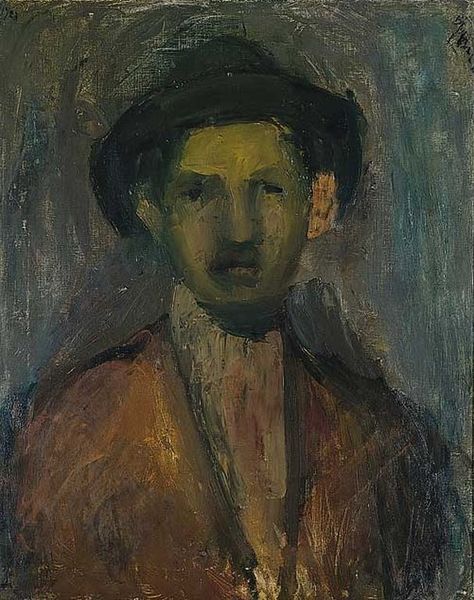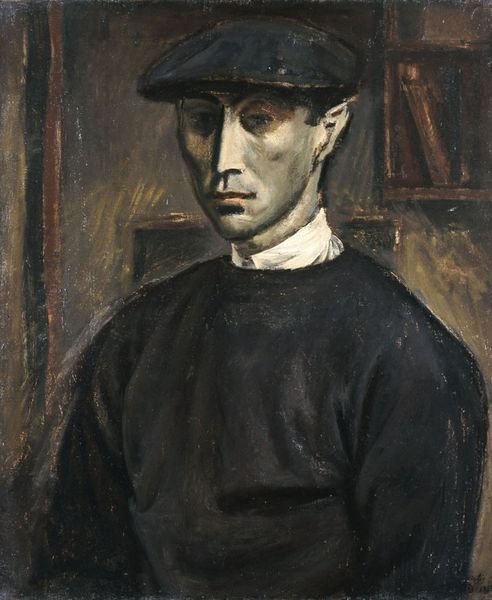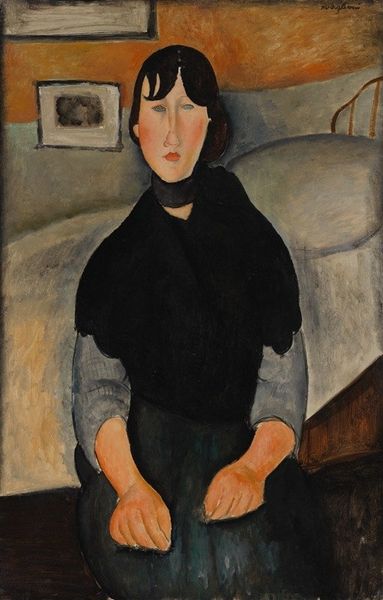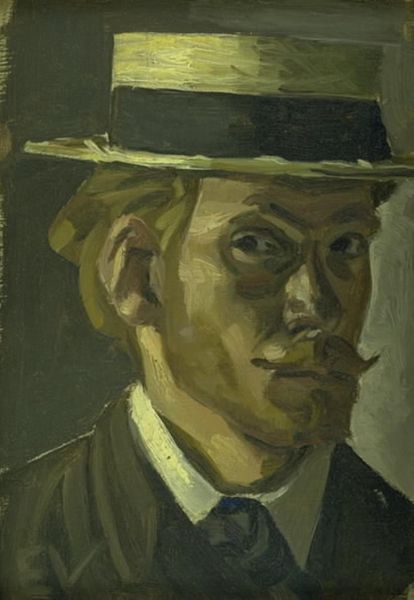
oil-paint
#
portrait
#
self-portrait
#
oil-paint
#
oil painting
#
expressionism
Copyright: Public domain US
Editor: So, here we have Robert Falk's "Self-Portrait with a Bandaged Ear," painted in 1921. It’s an oil painting. The mood strikes me as… contemplative, even a little defiant. It has quite geometric planes of light. What’s your read on this one? Curator: Defiant, yes, I get that. He stares out with an intensity that almost dares you to pity him. The bandage is a detail, of course, but think about the historical context – 1921, just after the tumult of World War I and revolution in Russia, Falk trying to pick up the pieces. Perhaps the ear is metaphorical as well as literal—what he hears and chooses not to hear. It almost speaks to an emotional amputation. What do you make of the tones? Editor: Mmm, emotional amputation, interesting. The earth tones are rather muted. Are they telling us something specific? Curator: They ground the work, don't they? There's a somber quality, yet that almost luminous skin… I wonder if it's hinting at resilience, survival even. Or maybe it's a kind of gallows humor? Falk using a kind of personal event and maybe laughing at it. Editor: That's quite an affecting interpretation. Looking at the blocky planes in his face and hat, I can definitely see the expressionistic touch more clearly now. Curator: Expressionism with a touch of cubism. It breaks him apart but also builds him anew. And think of self-portraiture itself, like an intense conversation he's having with himself. It feels intensely intimate. Editor: Right. The cubist expression allows him to have this intimate dialogue with the artist. It has changed my appreciation. I wouldn't have noticed all the emotional complexity by myself. Curator: And isn't that the joy of art? Discovering hidden layers together! It changes depending on who is doing the looking, including the one who painted it.
Comments
No comments
Be the first to comment and join the conversation on the ultimate creative platform.
